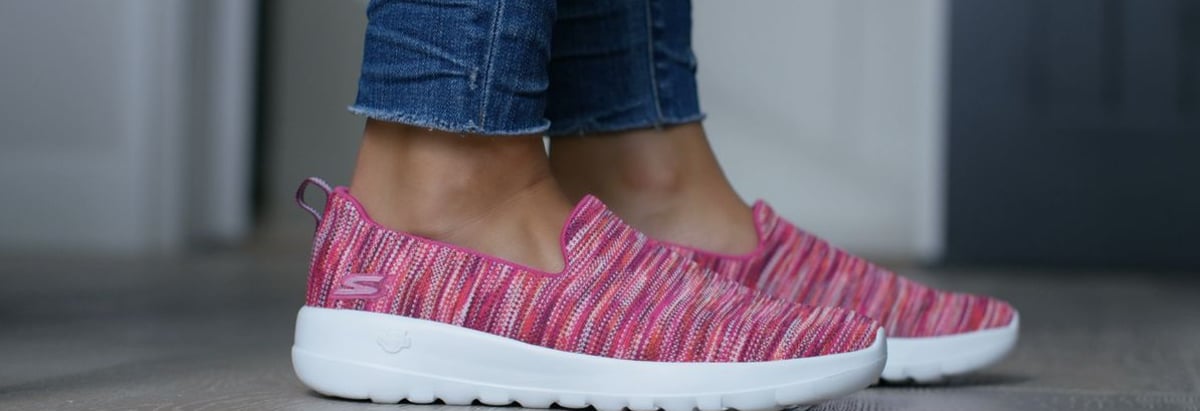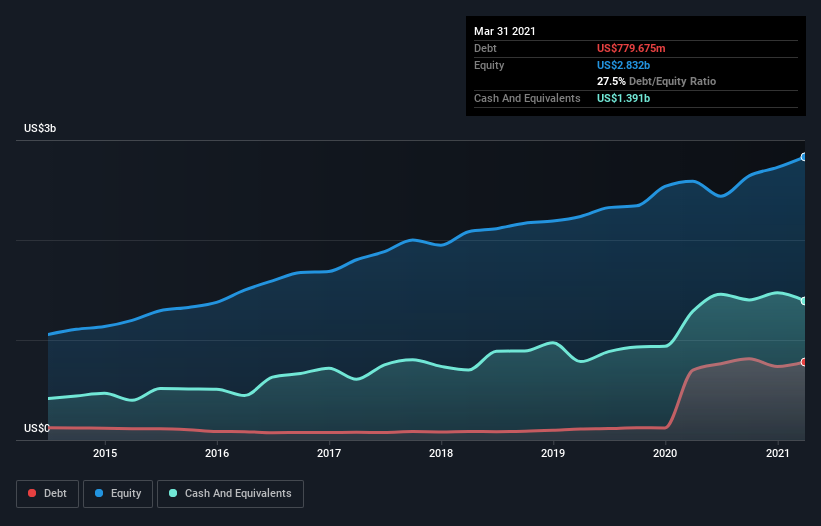
Howard Marks put it nicely when he said that, rather than worrying about share price volatility, 'The possibility of permanent loss is the risk I worry about... and every practical investor I know worries about.' So it seems the smart money knows that debt - which is usually involved in bankruptcies - is a very important factor, when you assess how risky a company is. Importantly, Skechers U.S.A., Inc. (NYSE:SKX) does carry debt. But the more important question is: how much risk is that debt creating?
When Is Debt Dangerous?
Debt is a tool to help businesses grow, but if a business is incapable of paying off its lenders, then it exists at their mercy. If things get really bad, the lenders can take control of the business. However, a more common (but still painful) scenario is that it has to raise new equity capital at a low price, thus permanently diluting shareholders. By replacing dilution, though, debt can be an extremely good tool for businesses that need capital to invest in growth at high rates of return. When we think about a company's use of debt, we first look at cash and debt together.
See our latest analysis for Skechers U.S.A
How Much Debt Does Skechers U.S.A Carry?
As you can see below, at the end of March 2021, Skechers U.S.A had US$779.7m of debt, up from US$699.8m a year ago. Click the image for more detail. However, its balance sheet shows it holds US$1.39b in cash, so it actually has US$610.9m net cash.

A Look At Skechers U.S.A's Liabilities
We can see from the most recent balance sheet that Skechers U.S.A had liabilities of US$1.27b falling due within a year, and liabilities of US$1.88b due beyond that. Offsetting this, it had US$1.39b in cash and US$869.6m in receivables that were due within 12 months. So its liabilities total US$893.9m more than the combination of its cash and short-term receivables.
Since publicly traded Skechers U.S.A shares are worth a total of US$7.59b, it seems unlikely that this level of liabilities would be a major threat. Having said that, it's clear that we should continue to monitor its balance sheet, lest it change for the worse. While it does have liabilities worth noting, Skechers U.S.A also has more cash than debt, so we're pretty confident it can manage its debt safely.
The modesty of its debt load may become crucial for Skechers U.S.A if management cannot prevent a repeat of the 33% cut to EBIT over the last year. When a company sees its earnings tank, it can sometimes find its relationships with its lenders turn sour. When analysing debt levels, the balance sheet is the obvious place to start. But ultimately the future profitability of the business will decide if Skechers U.S.A can strengthen its balance sheet over time. So if you want to see what the professionals think, you might find this free report on analyst profit forecasts to be interesting.
But our final consideration is also important, because a company cannot pay debt with paper profits; it needs cold hard cash. While Skechers U.S.A has net cash on its balance sheet, it's still worth taking a look at its ability to convert earnings before interest and tax (EBIT) to free cash flow, to help us understand how quickly it is building (or eroding) that cash balance. During the last three years, Skechers U.S.A produced sturdy free cash flow equating to 51% of its EBIT, about what we'd expect. This free cash flow puts the company in a good position to pay down debt, when appropriate.
Summing up
While Skechers U.S.A does have more liabilities than liquid assets, it also has net cash of US$610.9m. So we don't have any problem with Skechers U.S.A's use of debt. There's no doubt that we learn most about debt from the balance sheet. However, not all investment risk resides within the balance sheet - far from it. To that end, you should be aware of the 2 warning signs we've spotted with Skechers U.S.A .
If, after all that, you're more interested in a fast growing company with a rock-solid balance sheet, then check out our list of net cash growth stocks without delay.
If you decide to trade Skechers U.S.A, use the lowest-cost* platform that is rated #1 Overall by Barron’s, Interactive Brokers. Trade stocks, options, futures, forex, bonds and funds on 135 markets, all from a single integrated account. Promoted
New: Manage All Your Stock Portfolios in One Place
We've created the ultimate portfolio companion for stock investors, and it's free.
• Connect an unlimited number of Portfolios and see your total in one currency
• Be alerted to new Warning Signs or Risks via email or mobile
• Track the Fair Value of your stocks
This article by Simply Wall St is general in nature. It does not constitute a recommendation to buy or sell any stock, and does not take account of your objectives, or your financial situation. We aim to bring you long-term focused analysis driven by fundamental data. Note that our analysis may not factor in the latest price-sensitive company announcements or qualitative material. Simply Wall St has no position in any stocks mentioned.
*Interactive Brokers Rated Lowest Cost Broker by StockBrokers.com Annual Online Review 2020
Have feedback on this article? Concerned about the content? Get in touch with us directly. Alternatively, email editorial-team (at) simplywallst.com.
About NYSE:SKX
Skechers U.S.A
Designs, develops, and markets footwear, apparel, and accessories worldwide.
Excellent balance sheet with acceptable track record.
Similar Companies
Market Insights
Community Narratives



